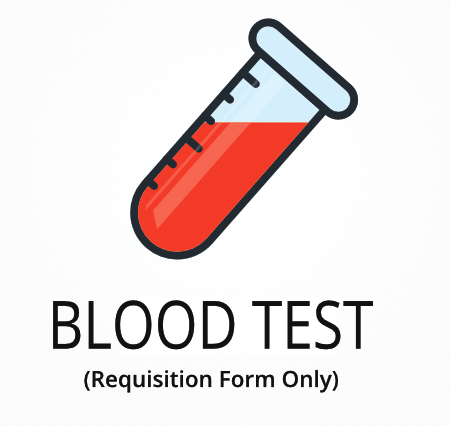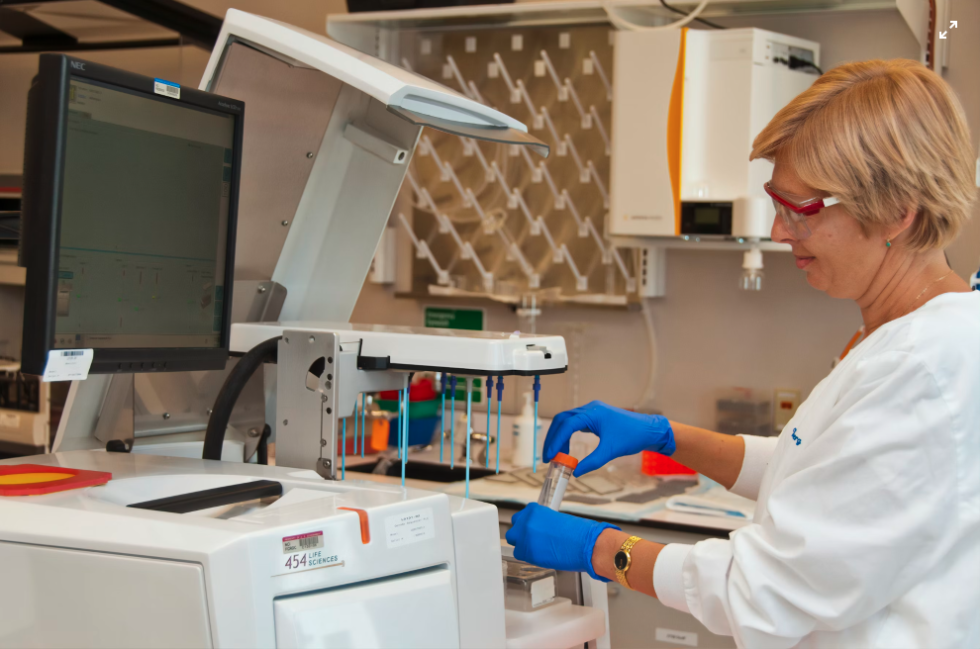Understanding The Comprehensive Metabolic Panel
What is the Comprehensive Metabolic Panel?
The Comprehensive Metabolic Panel (CMP) provides important information about your metabolic health. This group of tests measures various aspects of your metabolism, helping healthcare professionals make informed decisions about diagnosis, treatment, and preventive care.
It’s widely used in both traditional and functional medicine and is also included in our Health Check Plus with Vitamin D test panel.
CMP In Traditional Medicine
- Diagnose conditions such as liver disease, kidney disease, and blood sugar issues like diabetes and hypoglycemia.
- Monitor treatment efficacy for these various conditions.
CMP In Functional Medicine
- Information to help identify potential root causes of health issues and design preventive strategies. This is done by using narrower “functional ranges” within the CMP (and other tests) to uncover patterns within the blood work to create pinpoint therapies to improve your health situation or boost overall health. Our clinical department understands the importance of both standard lab test ranges and functional ranges (order your one-on-one results review).
Labs Included in Your Order
| Test Name | Reference Range | Significance | Low and High Levels of Test Name |
|---|---|---|---|
| Alanine Aminotransferase (ALT) |
|
ALT is an enzyme primarily found in the liver that plays a key role in converting amino acids into energy. Measuring ALT levels helps assess liver health, as damage to liver cells releases ALT into the bloodstream. | High: High levels of ALT may indicate liver damage or inflammation, such as from hepatitis or fatty liver disease.
Low: Low levels of ALT are generally not concerning and can be normal. |
| Aspartate Aminotransferase (AST) |
|
AST is an enzyme found in various tissues, including the liver and heart, involved in amino acid metabolism. Elevated AST levels can indicate tissue damage, particularly in the liver or muscles. | High: High levels of AST may suggest liver disease, heart problems, or muscle injury.
Low: Low levels of AST are typically not a cause for concern. |
| Alkaline Phosphatase (ALP) |
|
ALP is an enzyme related to the bile ducts; high levels can indicate liver or bone disorders. It is essential for breaking down proteins and is found in high amounts in the liver, bile ducts, and bones. | High: High levels of ALP can indicate liver disease, bile duct obstruction, or bone disorders.
Low: Low levels of ALP may suggest malnutrition or a deficiency in certain vitamins and minerals. |
| Bilirubin |
|
Bilirubin is a yellow compound that occurs in the normal catabolic pathway that breaks down red blood cells. It is processed by the liver and excreted in bile; elevated levels can cause jaundice and indicate liver dysfunction. | High: High levels of bilirubin may indicate liver disease, bile duct obstruction, or hemolytic anemia.
Low: Low levels of bilirubin are generally not concerning and can be normal. |
| Blood Urea Nitrogen (BUN) | 7 – 18 mg/dL | BUN measures the amount of nitrogen in your blood that comes from the waste product urea. It helps assess kidney function, as kidneys filter urea out of the blood. | High: High levels of BUN may indicate kidney dysfunction, dehydration, or a high-protein diet.
Low: Low levels of BUN can suggest liver disease or malnutrition. |
| Creatinine |
|
Creatinine is a waste product from the normal breakdown of muscle tissue, filtered out by the kidneys. Measuring creatinine levels helps assess kidney function. | High: High levels of creatinine may indicate impaired kidney function or kidney disease.
Low: Low levels of creatinine are uncommon and may be seen in conditions causing decreased muscle mass. |
| Glucose | 70 – 99 mg/dL (fasting) | Glucose is the primary energy source for the body’s cells, and its levels are tightly regulated by hormones like insulin. Monitoring glucose is essential for diagnosing and managing diabetes and other metabolic disorders. | High: High levels of glucose can indicate diabetes or prediabetes.
Low: Low levels of glucose may result in hypoglycemia, leading to symptoms like dizziness or confusion. |
| Calcium | 8.5 – 10.5 mg/dL | Calcium is a mineral critical for bone health, muscle function, and nerve signaling. Measuring calcium levels helps assess bone metabolism and detect conditions like hypercalcemia or hypocalcemia. | High: High levels of calcium may indicate hyperparathyroidism or certain cancers.
Low: Low levels of calcium can result in muscle cramps, tingling, or more severe complications like cardiac arrhythmias. |
| Sodium | 135 – 145 mmol/L | Sodium is an electrolyte that helps regulate water balance and nerve function in the body. Abnormal sodium levels can indicate dehydration, kidney issues, or hormonal imbalances. | High: High levels of sodium, or hypernatremia, may result from dehydration or excess salt intake.
Low: Low levels of sodium, or hyponatremia, may cause confusion, seizures, or other symptoms. |
| Potassium | 3.5 – 5.0 mmol/L | Potassium is an electrolyte crucial for muscle function, nerve transmission, and maintaining normal heart rhythm. Monitoring potassium levels helps detect kidney dysfunction and electrolyte imbalances. | High: High levels of potassium, or hyperkalemia, can disrupt heart rhythm and cause weakness.
Low: Low levels of potassium, or hypokalemia, may lead to muscle cramps, weakness, or arrhythmias. |
| Carbon Dioxide | 23 – 29 mmol/L | Carbon dioxide levels reflect the body’s acid-base balance and lung efficiency in expelling CO2. Abnormal levels can suggest respiratory or metabolic disorders. | High: High levels of CO2 may indicate respiratory acidosis or metabolic alkalosis.
Low: Low levels of CO2 may suggest respiratory alkalosis or metabolic acidosis. |
| Chloride | 96 – 106 mmol/L | Chloride is an electrolyte that helps maintain fluid balance and acid-base balance. It often complements sodium and potassium measurements in diagnosing electrolyte disturbances. | High: High levels of chloride, or hyperchloremia, may occur with dehydration or kidney disorders.
Low: Low levels of chloride, or hypochloremia, may be seen in cases of prolonged vomiting or diuretic use. |
| Albumin | 3.5 – 5.0 g/dL | Albumin is a protein made by the liver that helps maintain blood volume and transports hormones and drugs. Low albumin levels can indicate liver disease or malnutrition. | High: High levels of albumin are rare but may suggest dehydration.
Low: Low levels of albumin can point to liver disease, kidney issues, or poor nutritional status. |
| Total Protein | 6.0 – 8.3 g/dL | Total protein measures the sum of albumin and globulin, providing insights into nutritional status, liver function, and immune health. Abnormal levels can highlight various disorders. | High: High levels of total protein may suggest chronic inflammation or infections.
Low: Low levels of total protein can indicate malnutrition, liver disease, or kidney disorders. |
CMP Related Lab Tests
CMP Frequently Asked Questions (FAQs)
-
How should I prepare for the test?
- Typically, a 10-12 hour fast is recommended. This is usually recommended because eating before the blood test can significantly affect glucose levels. It is important to see how well your body controls blood sugar when you are fasting. When preparing for the CMP, water and black coffee are allowed.
-
What do abnormal results indicate?
- Abnormal results can suggest various conditions, from liver and kidney diseases to electrolyte imbalances. Further evaluations will be needed from your treating physician. You can find out more on our Comprehensive Metabolic Panel guide.
-
How often should I have a CMP done?
- Depending on factors like age, health status, and any ongoing treatments, your healthcare provider will recommend the appropriate frequency for the test. That said, it may be helpful to order the CMP each time you place an order at TrueHealthLabs.com so that you can visually see your trend and adjust your lifestyle as needed.
Source References
American Association for Clinical Chemistry
University of Rochester Medical Center
Medical Review Board
Reviewed by Jeff Donohue M.D. from Body Logic and Brady Hurst DC, CCCN. Written by True Health Lab’s team of editorial health contributors.
Disclaimer: This information is for educational purposes only and not intended as medical advice. Consult your healthcare provider for personalized guidance.
Why Customers Trust True Health Labs – What People are saying
Also rated 4.6 out of 5 based on 3452 ShopperApproved reviews- See all TrueHealthLabs.com reviews.







